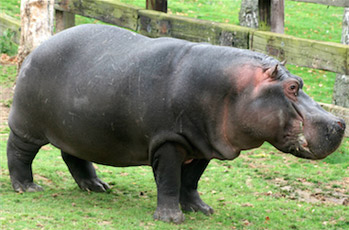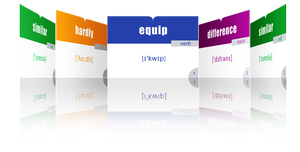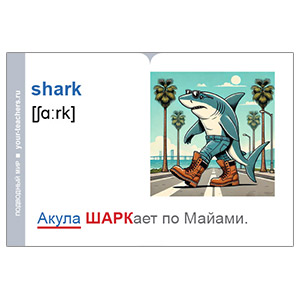Описане бегемота на английском языке
- Подробности
- 22305
На этой странице представлено краткое описание бегемота на английском языке. Двойной клик по слову откроет его перевод и озвучку. Ключевые слова можно закрепить в тренажёре в конце страницы. Работа со словами задействует моторную память и помогает лучше из запоминать. К каждому разделу добавлен аудиофайл в формате MP3 для более глубокого разбора и развития навыков аудирования.
БЕГЕМОТ

Vocabulary:
| № | Английский | Транскрипция | Русский |
|---|---|---|---|
| 1 | large | [lɑːdʒ] | огромный |
| 2 | fat | [fæt] | толстый |
| 3 | calm | [kɑːm] | спокойный |
| 4 | slow | [sləʊ] | медленный |
| 5 | short-legged | [ˌʃɔːt ˈleɡɪd] | коротконогий |
| 6 | heavy | [ˈhevi] | тяжёлый |
| 7 | clumsy | [ˈklʌmzi] | неуклюжий |
| 8 | thick-skinned | [ˌθɪk ˈskɪnd] | толстокожий |
ПОТРЕНИРУЙТЕ СЛОВА
Краткое описание бегемота
Look at the picture. You can see a hippo. Its name comes from ancient Greek for “river horse”. It is standing in the grass. It’s big and fat. It has 2 small ears. It has 2 small eyes. Its legs and neck are short. It has a massive body and huge head. Its belly is big. Its nostrils are very wide. Its skin is extremely thick. It looks cute but it could be very dangerous when it’s disturbed. Hippos are omnivores.
LISTEN TO THE TEXT
15 Интересных фактов о бегемоте
The common hippopotamus (Hippopotamus amphibius) is a large, mostly herbivorous, semi-aquatic mammal that lives mainly in Africa. The name means “river horse” in ancient Greek.
The eyes, ears, and nostrils sit high on the skull so the animal can watch and breathe while almost submerged. Its powerful jaw opens to almost 180°. The front incisors may reach 40 cm, and the canines up to 50 cm. Its skin is extremely thick (to 4 cm) and almost hairless.
The head is huge—up to a quarter of body weight, sometimes 900 kg. Average males weigh around 1600 kg, females about 1400 kg; very large males may reach 4000 kg. Body length is usually at least 3 m and can reach 5.4 m; the tail may be 56 cm.
The body is barrel-shaped with short legs and a long muzzle. Despite being bulky, hippos can sprint up to 30 km/hr for short distances. They usually trot rather than run.
Hippos spend most daylight hours in rivers or pools and go onto land at night to feed. Their feet are partly webbed; although semi-aquatic, a hippo is not a great swimmer and often walks along the bottom.
Behavior is generally aggressive; fights can be fatal, and attacks on humans are not rare, so the hippopotamus is considered one of Africa’s most dangerous animals.
Lifespan in the wild can reach about 40 years, and in captivity up to 50 years.
LISTEN TO THE TEXT








 Как правильно изучать английский язык по карточкам (статьи)
Как правильно изучать английский язык по карточкам (статьи)